Khmelnytsky, Bohdan
Khmelnytsky, Bohdan (Fedir) Zinovii [Хмельницький, Богдан (Федір) Зіновій; Xmel’nyc’kyj], b ca 1595–6, d 6 August 1657 in Chyhyryn. Hetman of the Zaporozhian Host from 1648 to 1657, founder of the Hetman state (1648–1782). By birth he belonged to the Ukrainian lesser nobility and bore the Massalski, and later the Abdank, coat of arms. His father, Mykhailo Khmelnytsky, served as an officer under the Polish crown hetman Stanisław Żółkiewski and his mother, according to some sources, was of Cossack descent. Khmelnytsky's place of birth has not been determined for certain. Little more is known about Khmelnytsky's education. Apparently, he received his elementary schooling in Ukrainian, and his secondary and higher education in Polish at a Jesuit college, possibly in Jarosław, but more probably in Lviv. He completed his schooling before 1620 and acquired a broad knowledge of world history and fluency in Polish and Latin. Later he acquired a knowledge of Turkish, Tatar, and French. The Battle of Cecora (1620), in which he lost his father and was captured by the Turks, was his first military action. After spending two years in Istanbul, he was ransomed by his mother and returned to Ukraine.
There is no reliable information about Khmelnytsky's activities from 1622 to 1637. All later accounts of his exploits in wars against the Tatars, Turks, and Muscovites (1632–4) have no documentary foundation. Only one fact is certain—that in the 1620s he joined the registered Cossacks. Sometime between 1625 and 1627 he married Hanna Somko, a Cossack's daughter from Pereiaslav, and settled on his patrimonial estate in Subotiv near Chyhyryn. By 1637 he attained the high office of military chancellor. His signature appeared on the capitulation agreement signed at Borovytsia on 24 December 1637 that marked the end of a Cossack rebellion.
There are grounds to believe that Khmelnytsky belonged to the faction of officers that favored an understanding between the Zaporozhian Host and Poland. Subsequent events, however, dashed any hopes of reconciliation. By the Ordinance of 1638 the Polish king revoked the autonomy of the Zaporozhian Host and placed the registered Cossacks under the direct authority of the Polish military command in Ukraine. The office of military chancellor, which Khmelnytsky had held, was abolished and Khmelnytsky was demoted to a captain of Chyhyryn regiment. In the fall of 1638 he visited Warsaw with a Cossack delegation to petition King Władysław IV Vasa to restore the former Cossack privileges.
In the next few years Khmelnytsky devoted his attention mostly to his estates in the Chyhyryn region, but in 1645 he served with a detachment of 2,000–2,500 Cossacks in France, and probably took part in the siege of Dunkirk. By this time his reputation for leadership was such that King Władysław IV Vasa, in putting together a coalition of Poland, Venice, and other states against Turkey, turned to him to obtain the support of the Zaporozhian Cossacks. In April 1646 he was one of the Cossack envoys in Warsaw with whom the king discussed plans for the impending war. These events contributed to his reputation in Ukraine, Poland, and abroad, and provided him with wide military and political contacts.
Khmelnytsky, however, had been regarded with suspicion for many years by the Polish magnates in Ukraine who were politically opposed to King Władysław IV Vasa. The new landowners of the Chyhyryn region, A. Koniecpolski, Crown Hetman Stanisław Żółkiewski, and his son, Crown Flag-bearer A. Żółkiewski, treated Khmelnytsky with particular hostility. With the collusion of the Chyhyryn assistant vicegerent D. Czapliński, who bore some personal grudge against Khmelnytsky, they conspired to deprive Khmelnytsky of his Subotiv estate. In spite of the fact that Khmelnytsky received a royal title to Subotiv in 1646, Czapliński raided the estate, seized movable property, and disrupted the manor's economy. At the same time Czapliński's servants severely beat Khmelnytsky's small son at the marketplace in Chyhyryn. Under these conditions of violence and terror Khmelnytsky's wife died in 1647, and towards the end of the year A. Koniecpolski ordered Khmelnytsky's arrest and execution. It was only the help and the surety put up by his friends among the Chyhyryn officers, and particularly by Col Mykhailo Krychevsky, that saved Khmelnytsky from death. At the end of December 1647 he departed for the Zaporizhia with a small (300–500-man) detachment. There he was elected hetman. This event marked the beginning of a new Cossack uprising, which quickly turned into a national revolution (see Cossack-Polish War).
Khmelnytsky was married three times. His first wife, who was the mother of all his children, died prematurely. His second wife, Matrona, whom he married in early 1649, was the former wife of his enemy D. Czapliński. In 1651 while Khmelnytsky was away on a military campaign, she was executed for conspiracy and adultery by his son Tymish. In the summer of 1651 Khmelnytsky married Hanna Zolotarenko, a Cossack woman from Korsun and the widow of Col Pylyp (Pylypets). Surviving him by many years, she entered a monastery in 1671 and adopted the religious name of Anastasiia. Khmelnytsky had two sons and four daughters. His older son, Tymish Khmelnytsky, died on 15 September 1653 in the siege of the Moldavian fortress of Suceava (see Battle of Suceava). The younger son, Yurii Khmelnytsky, was elected during his father's lifetime heir apparent under Ivan Vyhovsky's regency. Eventually, Yurii twice held the office of hetman. Khmelnytsky's daughter Kateryna (Olena) was married to Danylo Vyhovsky, and after his death in Muscovite captivity she married Hetman Pavlo Teteria. The second daughter, Stepaniia, was the wife of Ivan Nechai, who died in Muscovite exile. She later became a nun in Kyiv. The names of the other two daughters are unknown. One of them was married to Capt Hlyzko of Korsun regiment, who died in 1655 fighting against Poland. The other was married in 1654 to L. Movchan, a Cossack from Novhorod-Siverskyi. Khmelnytsky's line died out at the end of the 17th century. The Khmelnytskys were numerous in Left-Bank Ukraine and Muscovy but were of a different lineage. Khmelnytsky was buried on 25 August 1657 in Saint Elijah's Church in Subotiv, which he himself had built.
Khmelnytsky's greatest achievement in the process of national revolution was the Cossack Hetman state of the Zaporozhian Host (1648–1782). His statesmanship was demonstrated in all areas of state-building—in the military, administration, finance, economics, and culture. With political acumen he invested the Zaporozhian Host under the leadership of its hetman with supreme power in the new Ukrainian state, and unified all the estates of Ukrainian society under his authority. Khmelnytsky not only built a government system and developed military and civilian administrators, including Ivan Vyhovsky, Pavlo Teteria, Danylo Nechai and Ivan Nechai, Ivan Bohun, Hryhorii Hulianytsky, and Stanyslav Morozenko, out of Cossack officers and Ukrainian nobles, but also established an elite within the Cossack Hetman state. In spite of setbacks and difficulties, this elite preserved and maintained its gains in the face of Muscovy's invasion and against Polish and Turkish claims almost to the end of the 18th century.
Khmelnytsky's Realm (Khmelnychchyna). The national uprising of 1648–57 headed by Khmelnytsky liberated a large part of Ukrainian territory from Poland and established a Cossack Hetman state that was abolished only in the 1780s. Khmelnytsky's uprising induced some changes in the political system of eastern Europe, and brought about certain changes in the socioeconomic structure of Cossack Ukraine. It gave rise to a new elite of Cossack officers that eventually, in the 18th century, evolved into a Ukrainian variant of the Polish nobility and, in the 19th century, into a Ukrainian variant of the Russian nobility.
The Cossack state, or ‘kozatske panstvo,’ emerged long before the Khmelnytsky period. According to historians such as Ivan Krypiakevych, Nataliia Polonska-Vasylenko, and Lev Okinshevych, a Ukrainian Cossack state—the Zaporozhian Sich—was established as early as the 16th century. Viacheslav Lypynsky believed that the Cossacks ‘in a nationally alien Poland slowly became a state within a state.’ But the Zaporozhian Sich and the Cossack estate were only embryonic forms of the Cossack state that was established in the 17th century on old Cossack territories—the Dnieper region, including Kyiv—and on the recently colonized southern Left-Bank Ukraine. The Cossacks claimed these lands as their own by right of conquest and use. From the time of Hetman Petro Konashevych-Sahaidachny, Cossackdom as a ‘state within a state’ became absorbed into the Cossack world view. This view was accepted in Poland and in Western Europe, particularly in Sweden and Transylvania; eg, in 1628 Prince Bethlen-Gábor of Transylvania said: ‘The Cossack people can secede from Poland and build its separate Commonwealth ... if only it finds for its struggle a wise and noble leader and organizer.’ Khmelnytsky turned out to be that leader.
The first reports about Khmelnytsky's uprising and his alliance with the Turks and Crimean Tatars informed the Polish government that this was more than just a rebellion. Both Crown Hetman Mikołaj Potocki and Adam Kysil, the voivode of Bratslav who was knowledgeable in Ukrainian affairs, wrote in March and May 1648 respectively that the Cossacks ‘absolutely want to rule in Ukraine’ and that Khmelnytsky ‘will form a new duchy.’
In Ukrainian political circles there were different ideas on the structure of the new state. Among the Orthodox nobility and higher clergy the conception that two sovereigns—the Kyiv metropolitan and the hetman of the Zaporozhian Host—would enter into relations with Poland was quite popular. But Khmelnytsky's military victories in 1648–9 and his triumphal entry into Kyiv in 1648, at which he was hailed as ‘the Moses, savior, redeemer, and liberator of the Rus’ people from Polish captivity ... the illustrious ruler of Rus’,’ weighed on the side of a Cossack state. In February 1649 during negotiations with a Polish delegation headed by Adam Kysil in Pereiaslav, Khmelnytsky declared that he was ‘the sole Rus’ autocrat’ and that he had ‘enough power in Ukraine, Podilia, and Volhynia ... in my land and principality stretching as far as Lviv, Kholm, and Halych.’ It became clear to the Polish envoys that Khmelnytsky had ‘denied Ukraine and all Rus’ to the Poles.’ A Vilnius panegyric in Khmelnytsky's honor (1650–1) asserted: ‘While in Poland it is King Jan II Casimir Vasa, in Rus’ it is Hetman Bohdan Khmelnytsky.’
Khmelnytsky claimed the divine right to rule over Cossacks as early as 29 July 1648, when in a letter to a Muscovite voivode he titled himself ‘Bohdan Khmelnytsky, by Divine grace hetman with the Zaporozhian Host.’ This formula was repeated in all official Cossack documents. In a letter from the Hlukhiv captain, S. Veichyk, to the Sevsk voivode, Prince T. Shcherbatov, written on 22 April 1651, the following title is used: ‘By God's grace our Great Ruler, Sir Bohdan Khmelnytsky, the Hetman of the entire Zaporozhian Host.’ Foreigners addressing Khmelnytsky titled him ‘Illustrissimus Princeps’ or ‘Dux.’ Greek metropolitans who visited Ukraine in 1650 prayed for him during the liturgy as ‘the Ruler and Hetman of the Great Rus’.’ The Turkish sultan called him a prince and monarch, and other foreign rulers called him ‘illustrissimus dux.’
The Pereiaslav Treaty of 1654 did not change the political status of Ukraine, or the title or authority of its hetman. Although the presence of a Muscovite garrison in Kyiv and the tsar's new title ‘Tsar of Little Russia, Grand Prince of Kyiv and Chernihiv’ laid symbolic claim of Muscovite supremacy in Ukraine, the ‘Zaporozhian Host’ remained a separate, independent state known as the Rus’ state, or Hosudarstvo rosiiske, as it was called by Khmelnytsky in his letter of 17 February 1654 to the tsar. In Muscovite sources it was called the Little-Russian state (Malorossiiskoe gosudarstvo). It had its own head of state—the hetman of the Zaporozhian Host, elected for life—its own government and army, foreign policy, legislature and judiciary, finances, and independent religious and cultural life.
Khmelnytsky retained full state powers in both internal and external affairs. The hetman continued to be ‘the master and hetman’ of the Ukrainian state, ‘the supreme ruler and master of our fatherland,’ as he was called in official Ukrainian documents. Metropolitan Sylvestr Kosiv referred to him in 1654 as ‘the leader and commander of our land.’ Khmelnytsky referred to himself as ‘the master of the entire Rus’ land’ (1655) and as ‘Clementiae divinae Generalis Dux Exercituum Zaporoviensium’ (letter to C. Şerban, the ruler of Wallachia, 1657). General Chancellor Ivan Vyhovsky described Khmelnytsky to a Transylvanian envoy in 1657 thus: ‘As the tsar is a tsar in his realm, so the hetman is a prince or king in his domain.’ Ukraine's status as a sovereign state received international recognition. The Korsun Treaty of Alliance with Sweden of 6 October 1657 recognized Ukraine as ‘a free people, subject to no one’ (pro libera gente et nulli subjecta).
Khmelnytsky's Cossack state can be regarded as a new political entity—‘Ukraine of the Zaporozhian Host,’ as it was known in Moscow—or as a restoration of the old Rus’ state (Hosudarstvo rosiiskoie, as Khmelnytsky called it in his letter to the tsar of 17 February 1654). In all his negotiations with Sweden and Transylvania, Khmelnytsky demanded that his claims ‘to all old Ukraine, or Rus’ (Roxolania), wherever the Greek faith and their language still exist, as far as the Vistula River,’ be recognized.
The issue of the legitimate historical boundaries of the Cossack state brought the Belarusian question to the forefront of Ukrainian politics. The Zaporozhian Cossacks were interested in Belarus as early as the 16th century, as is evident from Hryhorii Loboda's and Severyn Nalyvaiko's campaigns. Khmelnytsky paid close attention to Belarus from the very beginning of his uprising. He supported the Cossack movement led by Konstantin Paklonski in eastern Belarus. A Belarusian regiment under the control of the Zaporozhian Host existed in 1655–7. In 1656 Khmelnytsky took under his protection Slutsk principality, which belonged to Prince B. Radziwiłł, then in 1657 Staryi Bykhau, granting it the right to free trade with Ukraine, and finally, on 8 July 1657, at the request of the Pynsk nobility, Pynsk, Mozyr, and Turiv counties. These actions greatly disturbed Muscovy, which began, in Viacheslav Lypynsky's words, ‘the struggle of two Rus’es over the third Rus’.’ Although Khmelnytsky's death put an end to Ukraine's expansion into Belarusian territory, the tradition of a ‘Rus’ state’ was preserved in the policies of Ivan Vyhovsky, and traces of it can be found even later.
BIBLIOGRAPHY
Hrushevs’kyi, M. Istoriia Ukraïny–Rusy, vols 8, 9 (Kyiv 1907, 1931; repr, New York 1954, 1957)
Kubala, L. Szkice historyczne: Wojna moskiewska (Warsaw 1910)
Lipiński, W. Z dziejów Ukrainy (Cracow 1912; 2nd edn in his Tvory, vol 2, Philadelphia 1980)
Kubala, L. Wojna szwedska (Lviv 1913)
———. Wojna brandenburska i najazd Rakoczego (Lviv 1917)
Lypyns’kyi, V. Ukraïna na perelomi (Vienna 1920; 2nd edn, New York 1954)
Kryp'iakevych, I. ‘Studiï nad derzhavoiu Bohdana Khmel’nyts’koho,’ ZNTSh, vols 139–40, 144–5, 147, 151 (Lviv 1926–7, 1931)
Petrovs’kyi, M. Vyzvol’na viina ukraïns’koho narodu proty hnitu shliakhets’koï Pol’shchi i pryiednannia Ukraïny do Rosiï 1648–54 rr. (Kyiv 1940)
Vernadsky, G. Bohdan, Hetman of Ukraine (New Haven 1941)
Iakovliv, A. Dohovir Het’mana Bohdana Khmel’nyts’koho z moskovs’kym tsarem Oleksiiem Mykhailovychem 1654 r. (New York 1954)
Kryp'iakevych, I. Bohdan Khmel’nyts’kyi (Kyiv 1954; 2nd edn 1990)
Ohloblyn, O. Dumky pro Khmel’nychchynu (New York 1957)
Shevchenko, F. Politychni ta ekonomichni zv'iazky Ukraïny z Rosiieiu v seredyni XVII st. (Kyiv 1959)
Ohloblyn, O. Problema derzhavnoï vlady na Ukraïni za Khmel’nychchyny i Pereiaslavs’ka uhoda 1654r. (Munich–New York 1960)
Golobutskii, V. Diplomaticheskaia istoriia osvoboditel’noi voiny ukrainskogo naroda 1648–54 gg. (Kyiv 1962)
Kryp'iakevych, I. ‘Administratyvnyi podil Ukraïny 1648–54 rr.’ Istorychni dzherela ta ïkh vykorystannia, vol 2 (Kyiv 1966)
Wójcik, Z. Dzikie pola w ogniu, 3rd edn (Warsaw 1968)
Shevchenko, F. ‘Istorychne mynule v otsintsi B. Khmel’nyts’koho,’ UIZh, 12 (1970)
Zlepko, D. Der grosse Kosakenaufstand 1648 gegen die polnische Herrschaft (Wiesbaden 1980)
Zaborovskii, L. Rossiia, Rech’ Pospolitaia i Shvetsiia vseredine XVII veka (Moscow 1981)
Basarab, J. Pereiaslav 1654: A Historiographical Study (Edmonton 1982)
Kaczmarczyk, J. Bohdan Chmielnicki (Wrocław 1988)
Smolii, V.; Stepankov, V. Bohdan Khmel’nyts’kyi: Sotsial’no-politychnyi portret (Kyiv 1993; 2nd edn 1995)
Sysyn, F. ‘The Changing Image of the Hetman,’ Jahrbücher für Geschichte Osteuropas 46 (1998)
———. ‘Grappling with the Hero: Hrushevs'kyi Confronts Khmel'nyts'kyi.’ HUS 22 (1998)
———. ‘Bohdan Chmel'nyc'kyj's Image in Ukrainian Historiography since Independence,’ in Jordan P. et al (eds). Ukraine: Geographie, ethnische Struktur, Geshichte, Sprache und Literatur, Kultur, Politik, Bildung, Wirtschaft, Recht, Politik (Vienna 2001)
Hrushevsky, M. History of Ukraine-Rus’, vols 8; 9, book 1; 9, book 2, part 1; 9, book 2, part 2 (Edmonton–Toronto 2002–10)
Sysyn, F. ‘Khmelnytsky, Bohdan,’ in DeWald, J. (ed). Europe 1450–1789: Encyclopedia of the Early Modern World (New York 2003)
Glaser, A. M. (ed). Stories of Khmelnytsky: Competing Literary Legacies of the 1648 Ukrainian Cossack Uprising (Stanford 2015)
Oleksander Ohloblyn
[This article originally appeared in the Encyclopedia of Ukraine, vol. 2 (1989). The bibliography has been updated.]
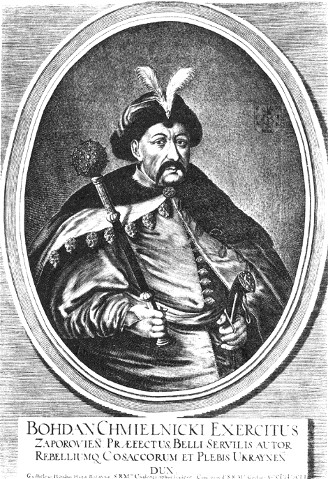
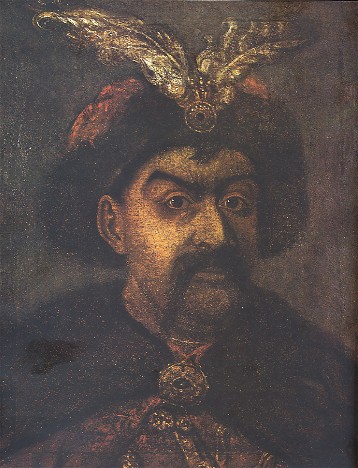
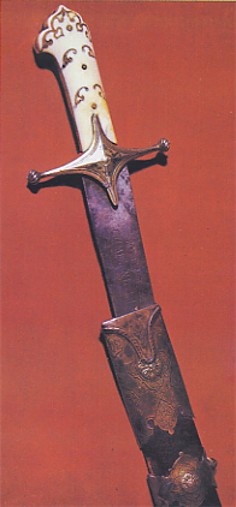
.jpg)
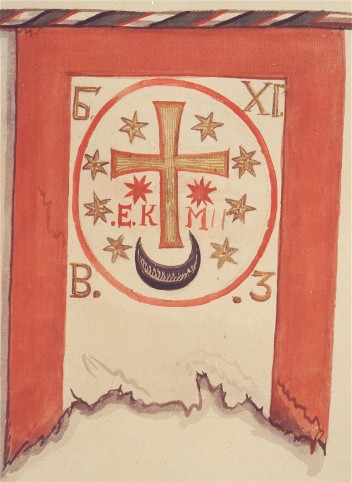
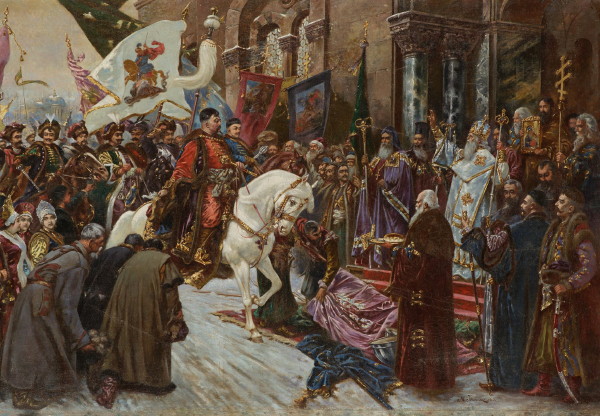
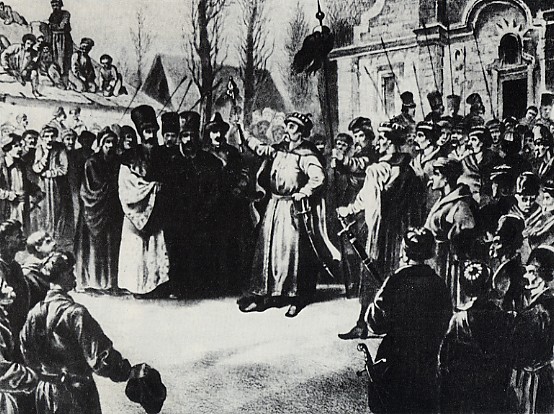
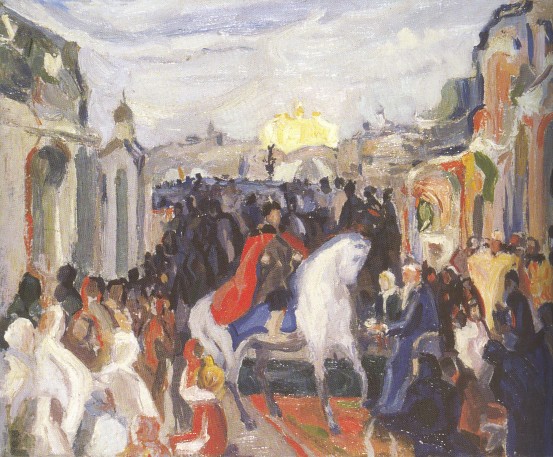
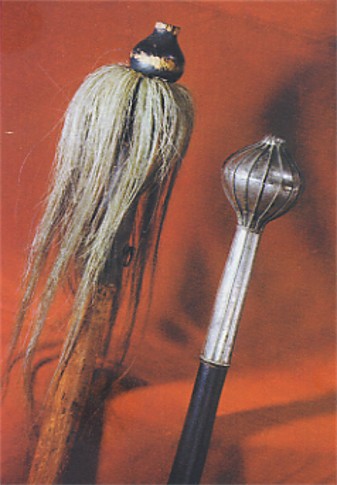
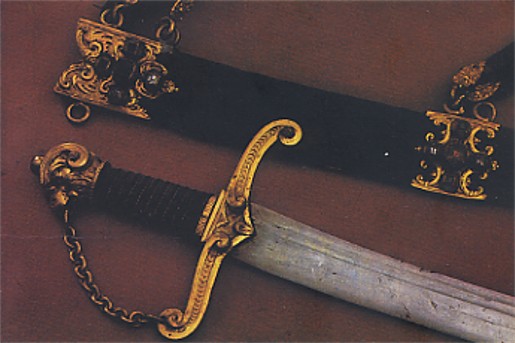
.jpg)
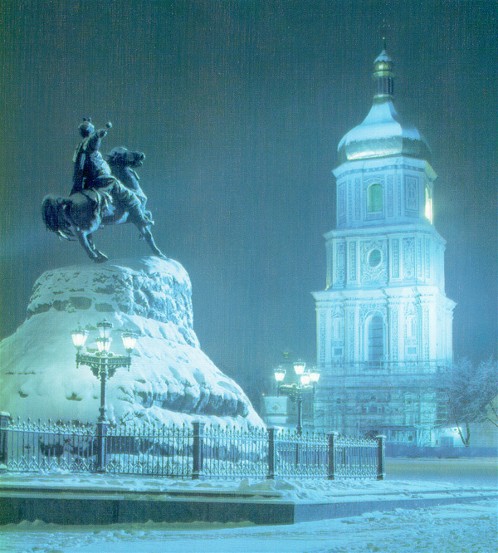
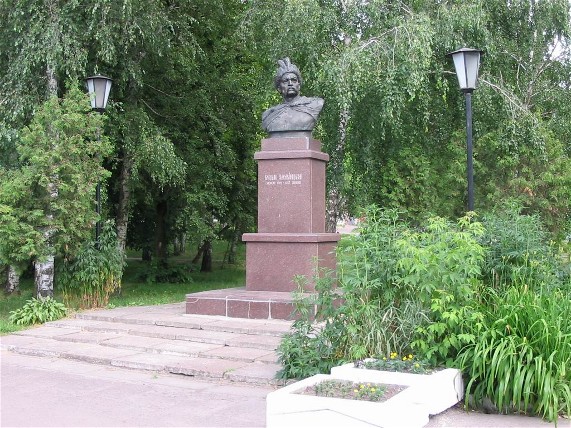
.jpg)